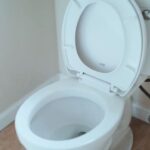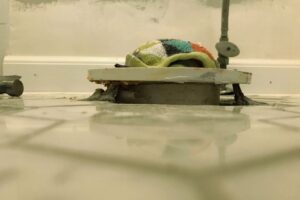It’s gross when you flush the toilet, and it won’t completely do its job. What could cause this problem? In this article, I’ll discuss the toilet not flushing all the way – causes and fix.
There are several possible causes why your toilet doesn’t flush all the way:
- Clog in your toilet, drain, or flange.
- Too low water level.
- Toilet drain pipe’s design is poor.
- There’s a problem in the flapper.
- Blocked inlet holes.
- Loose flush handle chain.
- Broken overflow tube.
Since there are several possible causes for this problem, you can also solve this in many ways. Each solution will focus on the cause of the problem. If you find it hard to find what causes this issue, ask the help of a plumber.
Read on to learn more about why your toilet is not flushing all the way and its respective fixes.
Toilet Not Flushing All the Way
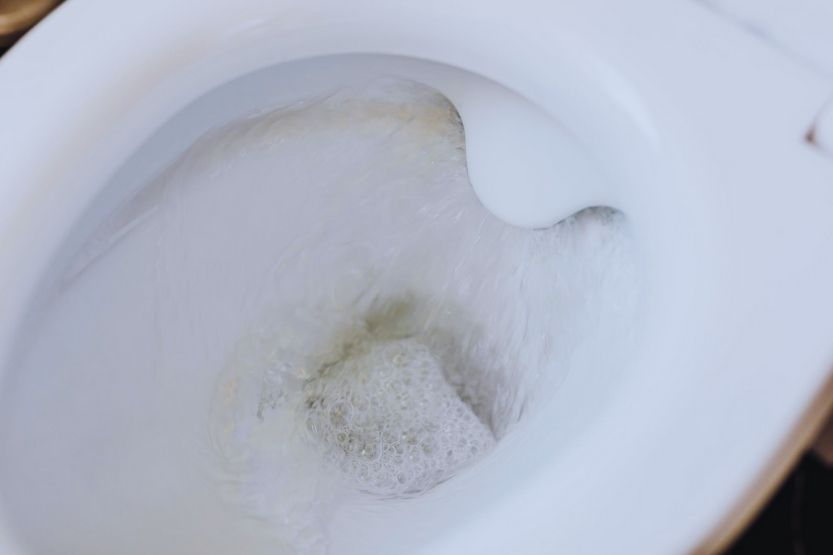
The issue of “why is my toilet not flushing” is not exclusively yours. At least once in their lifetime, every homeowner has already encountered this problem. I’m saying that since this is a universal problem, people must have already come up with solutions.
Causes
There are several possible causes why you are experiencing this problem. Some of the most common reasons are:
- Clog in the toilet, drain, or flange.
- Perhaps the setting of the water level in your toilet is too low.
- Poorly designed toilet drain pipe.
- The flapper could be experiencing some issues.
- Something is blocking the inlet holes.
- The flush handle chain could be loose.
- Damaged overflow tube.
Ask a Professional Plumber
Since the causes are particular, the solutions will naturally be concrete too. The solutions are also relatively easy to perform. However, if you are having trouble finding the cause of the problem, it is best to ask the help of a professional plumber.
Clogging Is the Most Common Reason
Clogging is the most common reason why your toilet won’t flush. It may take several flushing before everything goes down. If you throw your used napkins in the toilet, you’ll experience this problem.
Aside from too much toilet paper, there are other reasons why your toilet doesn’t flush all the way. You need to know these other reasons and their details, as well as their respective fixes.
Why Your Toilet Is Not Flushing All the Way Down
1. Clog in Your Toilet, Drain, or Flange
Clogging is the most common reason why your toilet won’t flush. If you throw used toilet paper down the toilet bowl, it will eventually clog the drain.
At first, you will notice that the flushing is getting slower. And then the toilet will eventually stop flushing. That’s when the clogging gets serious because the clog is already stopping the normal draining of water from the toilet bowl.
Now, how easy or difficult the fix is will depend on the location of the clog and its volume. If it’s easy, you will be able to remove it yourself. But if the clog is inaccessible, you may need to call for the help of a qualified plumber.
What You Can Do
- Try to unclog the bowl yourself. If the clog is not that serious, you can use a plunger to unclog it. The plunger can form a tight seal at the bottom of the toilet. So, position the plunger into the toilet bowl to create this tight seal.
- Push the plunger down and pull it up.
- Do this several times until you see that the water level is receding. You can also use a drain snake to unclog the toilet. But if you have tried it several times and nothing happens, maybe it’s time to call the professionals.
What Happens If Your Toilet Flange Is Too High?
2. Water Level in Your Toilet Is Set Too Low
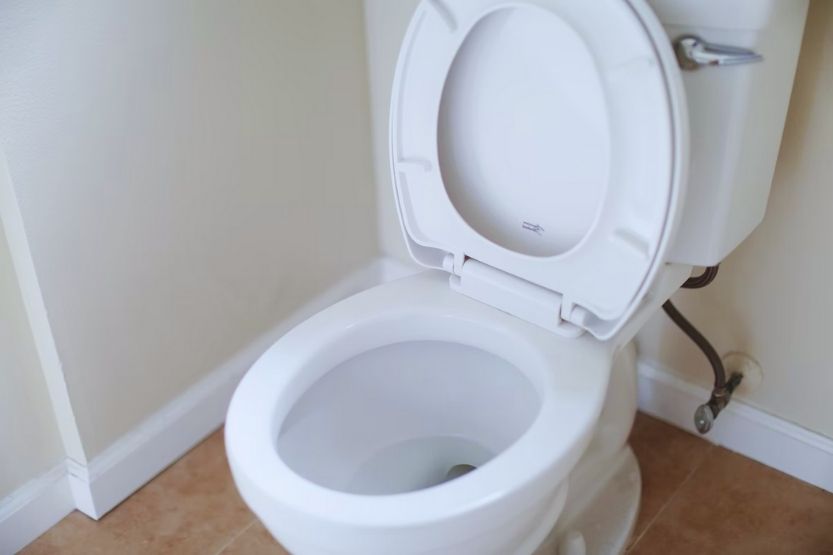
To flush the toilet, ensure that the water is enough to have enough pressure. Your toilet should have a mark on its inside that will show you the right level of water that it can hold.
Usually, that mark is just one inch below the top of the overflow tube. But some homeowners want to save water, so they set the water lower than what is recommended by the toilet manufacturers. There are also some cases where the tank is misaligned. This condition prevents the tank from being filled with the right amount of water.
What You Can Do
To fix the problem, you need to remove the tank’s cover. Check the water level if it is at the level of the mark. If it is not, adjust the float ball. This ball should always be floating above the water. It goes up and down depending on the level of water in the tank.
This ball is usually screwed into the shaft or lever connected to the flush handle. In some toilets, the ball’s elevation is controlled by a screw. If there’s not enough water in the tank, you have to screw this ball a few notches in. This will allow more water to flow before it shuts off the valve.
If there’s more water than needed, you have to screw that ball a few notches out. This will limit the amount of water that will fill the tank. The higher position of the ball, the more water will enter the tank before the valve shuts off. You should raise the level of the ball above the mark, and the toilet will flush completely.
Again, what are the causes of a toilet not flushing all the way? A clogged toilet is the most common reason a toilet does not flush all the way. Throwing napkins in toilet bowls would cause this issue. To fix this, you’ll need a plunger or a toilet auger.
How to Adjust Water Level in Toilet Bowl
3. Poorly Designed Drain Pipe
A toilet not flushing properly could be caused by a poorly designed drain pipe, or the drain pipe was not properly installed. If its installation is correct, this drain pipe should have a downward slope so that wastewater will flow quickly down.
The wastewater will be flushed through the pipes and downward into the main sewer line. But if the downward slope is not enough, there will be a pool of water inside the pipes. Water will get stuck in that place. So, when you flush the toilet, water will stall, and the flush will be incomplete.
What You Can Do
You can solve this by correcting the installation of the drain pipe. You can certainly do it yourself if you have the tools, skills, and experience to do it. However, if you don’t, the better thing to do is to ask the help of a professional plumber.
4. Problem with the Flapper

The small rubber circular-shaped part that seals the hole in the toilet tank is the flapper. It acts as the valve opening and closing the water flow to the drain pipe. There is a chain in this flapper that connects it to the lever. This lever is also connected to the flush handle outside the tank.
When you flush the toilet, the chain lifts this flapper, and the water drains down the hole to the drain pipe. The remaining water inside will pull the flapper down and seal the hole. Then water fills up again up to the mark indicated inside the tank.
However, if the flapper is damaged or worn out, it will not completely seal the tank, and water will leak out slowly to the drain pipe. This means there will not be enough water required to flush the toilet when you hit the flush handle thoroughly.
What You Can Do
- Inspect the condition of the flapper. Does it still look okay, or does it look old and worn out? Are the edges of the flapper still fairly straight and not warped? If your answer to this question is no, you need to replace this flapper with a new one.
- If the flapper is ok and has no imperfections, go and check the chain. Is it loose or taut? The chain should have the proper tension so that when you pull the flush handle, it can easily pull off the flapper from its seat in an instant.
- If the chain is loose, it will take more time to pry off the flapper from its seat in the hole. This will result in an incomplete or problematic flush. You should only allow around 1/2 inch of slack in the chain to get the flush to function properly.
5. Inlet Holes Are Blocked
The inlet holes of the toilet bowl allow water to fill the tank. They are located just below the toilet bowl’s lip. If you flush the toilet, water starts pouring in from these holes to replenish the water that drains out.
When something blocks these inlet holes, water will not be able to pour in, or the amount of water pouring in will be reduced. This will prevent the toilet from flushing fully. The inlet holes are very small, and they can be blocked by mineral deposits or bacterial growth.
What You Can Do
Get a small mirror and hold it under the bowl’s rim to examine the inlet holes. If they are clogged, do the following:
- Heat up around 12 ounces of white vinegar to about 120 °C.
- Use a funnel to pour this warm vinegar to the overflow tube.
- Let the vinegar stay there overnight or at least one hour.
- Don’t flush the toilet.
- Next morning, or after one hour, use a small wire to clear out the deposits in the inlet holes.
6. Loose Flush Chain
The flush chain is connected to the rubber flapper sitting on top of the drain hole inside the tank. Outside the tank is the flush handle. The chain is connected to it. If the chain is loose, it will not allow the flapper to stay open long enough to complete flushing.
You cannot open that flapper at all if this chain is disconnected. So, you will not be able to flush the toilet. If nothing happens when you turn the flush handle, something has gone wrong with this chain. It could not transmit the action from the handle to the rubber flapper.
What You Can Do
- Remove the tank cover, and inspect the condition of the chain. See if both its ends are connected to where they are supposed to be connected.
- Pull the handle and check if the chain is too long if the connections are ok. Replace it if one section of the chain is disconnected.
- The flapper won’t yank open if the chain is too long, and the toilet will not flush. But if it is too short, the flapper won’t sit properly on its hole and won’t seal it completely. The water coming from the inlet will keep on pouring in without ever filling the tank. You will just be wasting precious water.
7. Broken Overflow Tube
The tank part that prevents it from overflowing is the overflow tube. It is the tube that leads back excess water into the tank. If it is broken, water will get inside this tube, preventing the refilling of the tank. Your tank will not be full. So, when you flush the toilet, the flushing will not be complete.
What You Can Do
If the overflow tube is badly damaged, you have to replace it. But if the crack is just small, it may be possible to cover it with glue or plastic tape.
Conclusion: Toilet Not Flushing All the Way
When your toilet is not flushing all the way, it could be caused by one of the following conditions:
- A clog in your toilet, drain or flange.
- Toilet’s water level is set too low.
- Poorly designed toilet drain pipe.
- The flapper is having some problems.
- There is something that is blocking the inlet holes.
- Loose Flush Handle Chain
- Broken Overflow Tube
You are not alone if you have experienced one or two of these problems. Thankfully many homeowners have already found the right fixes for these problems. You need to follow the solutions that these homeowners have already tested.
Related reading:
Toilet Randomly Runs or Flushes Itself [Causes and How to Fix]
How to Put a Screen Back in a Window


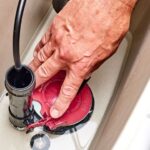
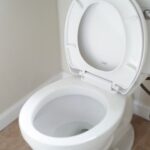
![Toilet Randomly Runs or Flushes Itself [Causes and How to Fix] toilet randomly runs](https://homecarezen.com/wp-content/uploads/2021/05/toilet-randomly-runs-150x150.jpg)
